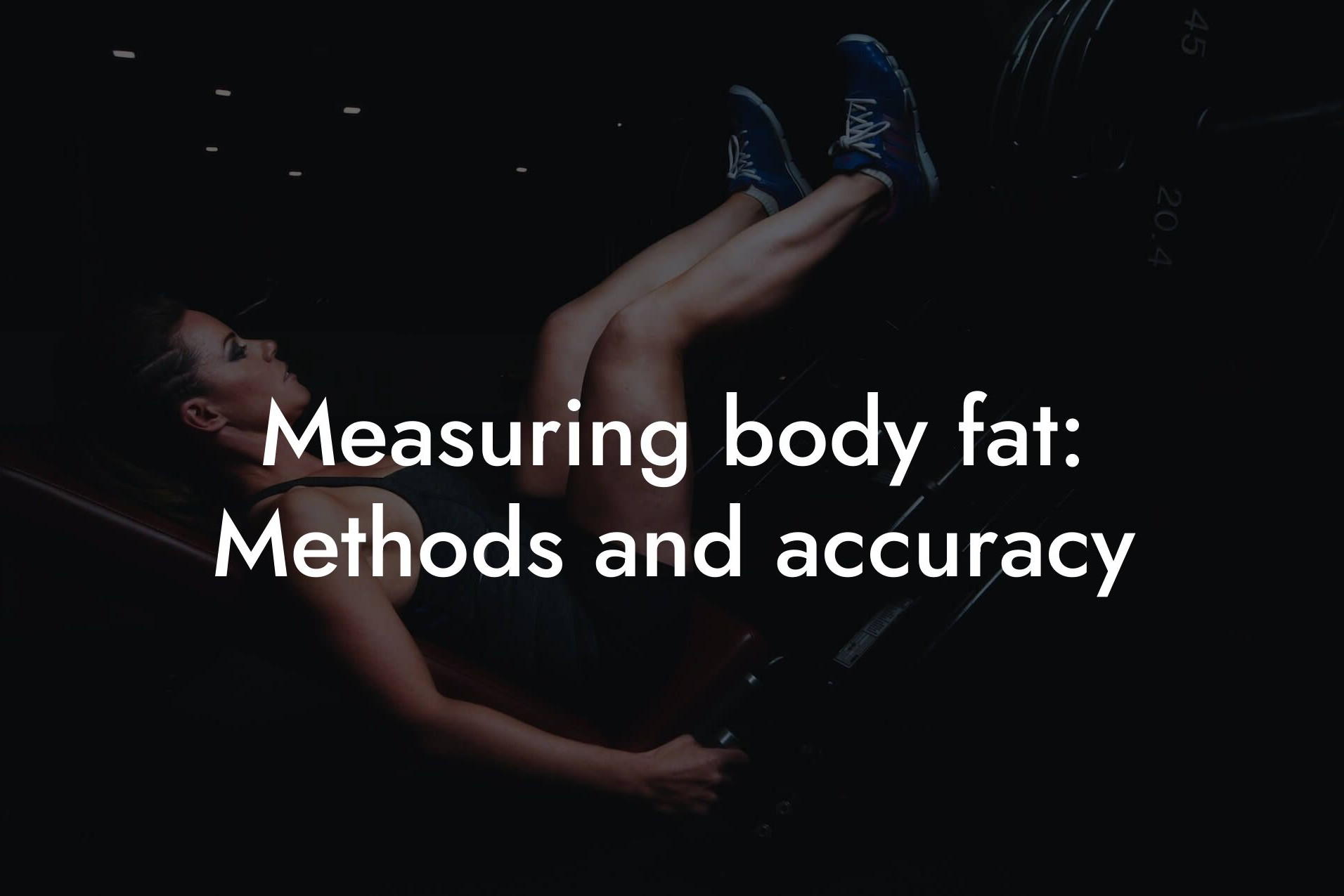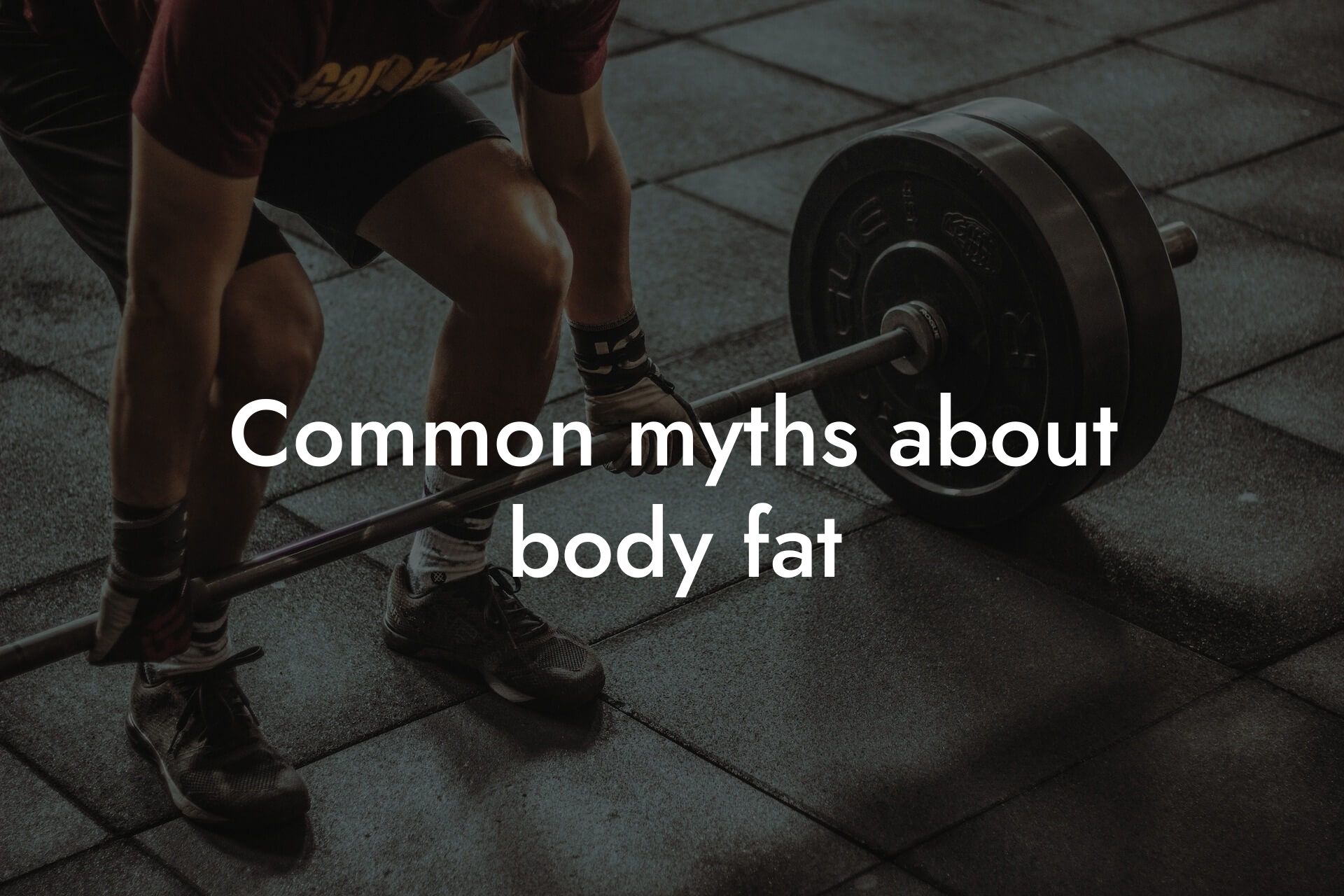As a high-earning professional, you understand the importance of maintaining a healthy physique. Not only does it boost your confidence, but it also plays a significant role in your overall well-being. One crucial aspect of physical health is body fat distribution, which can have a profound impact on your health risks and quality of life. In this article, we'll delve into the world of body fat distribution, exploring what it means for your health and how you can take control of it.
Table of Contents
What is Body Fat Distribution?
Body fat distribution refers to the way fat is stored in your body. It's not just about how much fat you have, but also where it's located. There are two main types of fat: subcutaneous fat, which lies just beneath the skin, and visceral fat, which surrounds your internal organs. Visceral fat is the more concerning of the two, as it's linked to a higher risk of chronic diseases.
The Risks of Abdominal Fat
Abdominal fat, also known as central obesity, is a common issue many people face. It's characterized by an excessive accumulation of fat around the midsection, which can lead to a range of health problems. Some of the risks associated with abdominal fat include:
- Increased risk of heart disease and stroke
- Higher likelihood of developing type 2 diabetes
- Greater risk of certain types of cancer, such as breast and colon cancer
- Sleep apnea and other respiratory issues
- Mental health concerns, including depression and anxiety
The Impact of Body Fat Distribution on Hormones
Body fat distribution can also affect your hormone levels, particularly insulin and cortisol. Insulin resistance, often linked to abdominal fat, can lead to type 2 diabetes and metabolic syndrome. Elevated cortisol levels, often associated with visceral fat, can disrupt your body's natural balance, leading to issues like:
- Weight gain and difficulty losing weight
- Mood swings and anxiety
- Poor sleep quality
- Skin issues, such as acne and thinning skin
How to Measure Body Fat Distribution
There are several ways to measure body fat distribution, including:
- Dual-Energy X-ray Absorptiometry (DEXA) scans, which provide a detailed analysis of body composition
- Waist-to-hip ratio measurements, which can indicate abdominal fat
- Skinfold measurements, which assess subcutaneous fat
- Bioelectrical impedance analysis (BIA), which estimates body fat percentage
The Benefits of a DEXA Scan
At Tano Performance Group, we use DEXA scans to provide our clients with a comprehensive understanding of their body composition. This non-invasive, low-radiation scan offers a range of benefits, including:
- Accurate measurement of body fat percentage and distribution
- Assessment of bone density, allowing for early detection of osteoporosis
- Identification of areas for improvement, enabling targeted training and nutrition plans
- Monitoring of progress, helping you stay motivated and on track
Lifestyle Changes to Improve Body Fat Distribution
While genetics play a role in body fat distribution, there are several lifestyle changes you can make to improve your health:
- Engage in regular exercise, focusing on strength training and high-intensity interval training (HIIT)
- Follow a balanced diet, rich in whole foods, fruits, and vegetables, and low in processed and sugary foods
- Get adequate sleep, aiming for 7-9 hours per night
- Manage stress levels through techniques like meditation, yoga, or deep breathing exercises
Body fat distribution is a critical aspect of overall health, and understanding it can help you take control of your well-being. By recognizing the risks associated with abdominal fat, understanding the impact on hormones, and making lifestyle changes, you can improve your body composition and reduce your risk of chronic diseases. At Tano Performance Group, we're committed to helping you achieve your health and fitness goals. Contact us today to schedule your DEXA scan and take the first step towards a healthier, happier you.
Frequently Asked Questions
What is body fat distribution?
Body fat distribution refers to the way fat is stored in the body, including the location and amount of fat in different areas. It's an important indicator of overall health, as it can affect the risk of chronic diseases like diabetes, heart disease, and certain types of cancer.
Why is body fat distribution important for my health?
Body fat distribution is important because it can indicate the presence of certain health risks. For example, excess fat around the abdominal area (central obesity) is linked to an increased risk of insulin resistance, type 2 diabetes, and cardiovascular disease. On the other hand, fat stored in the hips and thighs (gluteal-femoral obesity) is associated with a lower risk of these conditions.
What are the different types of body fat distribution?
There are two main types of body fat distribution: android and gynoid. Android fat distribution is characterized by excess fat around the abdominal area, while gynoid fat distribution is marked by excess fat in the hips and thighs. Some people may have a combination of both types.
What is android fat distribution?
Android fat distribution, also known as central obesity, is characterized by excess fat stored around the abdominal area, including the waist, stomach, and upper back. This type of fat distribution is associated with an increased risk of insulin resistance, type 2 diabetes, and cardiovascular disease.
What is gynoid fat distribution?
Gynoid fat distribution is characterized by excess fat stored in the hips, thighs, and buttocks. This type of fat distribution is associated with a lower risk of chronic diseases, such as insulin resistance, type 2 diabetes, and cardiovascular disease.
How is body fat distribution measured?
Body fat distribution can be measured using various methods, including dual-energy X-ray absorptiometry (DXA), magnetic resonance imaging (MRI), and computed tomography (CT) scans. These methods provide accurate measurements of fat mass and distribution.
What is the ideal body fat distribution?
The ideal body fat distribution varies from person to person, depending on factors such as age, sex, and ethnicity. However, a general guideline is to aim for a waist-to-hip ratio of 0.8 or lower for women and 0.9 or lower for men.
How does body fat distribution affect my risk of chronic diseases?
Excess fat around the abdominal area (central obesity) is linked to an increased risk of chronic diseases, such as insulin resistance, type 2 diabetes, and cardiovascular disease. On the other hand, fat stored in the hips and thighs (gluteal-femoral obesity) is associated with a lower risk of these conditions.
Can body fat distribution be changed?
Yes, body fat distribution can be changed through a combination of diet, exercise, and lifestyle modifications. For example, incorporating strength training exercises that target the core muscles can help reduce fat around the abdominal area.
What role does diet play in body fat distribution?
Diet plays a significant role in body fat distribution. Consuming a diet high in processed foods, sugar, and saturated fats can contribute to excess fat around the abdominal area, while a diet rich in whole foods, fruits, and vegetables can help promote a healthier fat distribution.
How does exercise affect body fat distribution?
Regular exercise, particularly strength training and high-intensity interval training (HIIT), can help improve body fat distribution by reducing fat around the abdominal area and increasing fat in the hips and thighs.
What is the relationship between body fat distribution and hormones?
Hormones, such as insulin and cortisol, play a significant role in body fat distribution. For example, high levels of cortisol can contribute to excess fat around the abdominal area, while high levels of insulin can promote fat storage in the hips and thighs.
Can stress affect body fat distribution?
Yes, chronic stress can affect body fat distribution by increasing the production of cortisol, a hormone that promotes fat storage around the abdominal area.
How does sleep affect body fat distribution?
Poor sleep quality and duration can disrupt hormones that regulate fat distribution, leading to excess fat around the abdominal area and other areas of the body.
What is the relationship between body fat distribution and bone density?
Body fat distribution is linked to bone density, as excess fat around the abdominal area can increase the risk of osteoporosis and fractures, while fat stored in the hips and thighs can help promote stronger bones.
How does body fat distribution affect my physical appearance?
Body fat distribution can significantly impact physical appearance, as excess fat around the abdominal area can lead to a larger waistline and a less toned physique, while fat stored in the hips and thighs can create a more curvy and feminine shape.
Can body fat distribution be inherited?
Yes, body fat distribution can be influenced by genetic factors, as certain genetic variations can affect the way fat is stored and distributed in the body.
How can I track changes in my body fat distribution?
You can track changes in your body fat distribution by taking progress photos, measurements, and tracking your body fat percentage using methods such as DXA or skinfold calipers.
What are some common myths about body fat distribution?
One common myth is that spot reduction is possible, meaning that you can lose fat in a specific area of the body through targeted exercises. However, this is not supported by scientific evidence. Another myth is that body fat distribution is solely determined by genetics, when in fact, lifestyle factors such as diet and exercise play a significant role.
How can I get professional guidance on body fat distribution?
You can consult with a healthcare professional, such as a registered dietitian or a fitness expert, who can provide personalized guidance on improving your body fat distribution and overall health.
What are some resources available to learn more about body fat distribution?
There are many resources available, including online articles, books, and educational websites. You can also consult with a healthcare professional or a fitness expert who can provide personalized guidance and support.
How can I stay motivated to improve my body fat distribution?
Staying motivated requires setting realistic goals, tracking progress, and celebrating small victories along the way. It's also important to focus on overall health and wellness, rather than just aesthetics, to maintain a positive and sustainable mindset.
What is the takeaway message about body fat distribution?
The takeaway message is that body fat distribution is an important indicator of overall health, and it can be improved through a combination of diet, exercise, and lifestyle modifications. By understanding the importance of body fat distribution and taking proactive steps to improve it, you can reduce your risk of chronic diseases and achieve a healthier, more toned physique.
Here are some related articles you might love...
- Measuring body fat: Methods and accuracy
- Ideal body fat percentage for professionals
- Common myths about body fat
- Body fat percentage by age and gender
- How body fat impacts overall health
- How to lower body fat percentage safely
- Body fat vs muscle mass: What matters more?
- The relationship between body fat and productivity
- The role of diet in managing body fat
Zak Faulkner
Zak Faulkner is a leading authority in the realm of physical health and body composition analysis, with over 15 years of experience helping professionals optimise their fitness and well-being. As one the experts behind Tano Performance Group, Zak has dedicated his career to providing in-depth, science-backed insights that empower clients to elevate their physical performance and overall health.
With extensive knowledge of DEXA technology, Zak specializes in delivering comprehensive body assessments that offer precise data on body fat, muscle mass, bone density, and overall physique. His expertise enables individuals to make informed decisions and achieve their fitness goals with accuracy and confidence. Zak’s approach is rooted in a deep understanding of human physiology, combined with a passion for helping clients unlock their full potential through personalised strategies.
Over the years, Zak has earned a reputation for his commitment to excellence, precision, and client-focused service. His guidance is trusted by top professionals who demand the best when it comes to their health. Whether advising on fitness programs, nutritional strategies, or long-term wellness plans, Zak Faulkner’s insights are a valuable resource for anyone serious about taking their health and fitness to the next level.
At Tano Performance Group, Zak continues to lead our Content Team revolutionising how professionals approach their physical health, offering unparalleled expertise that drives real results.




